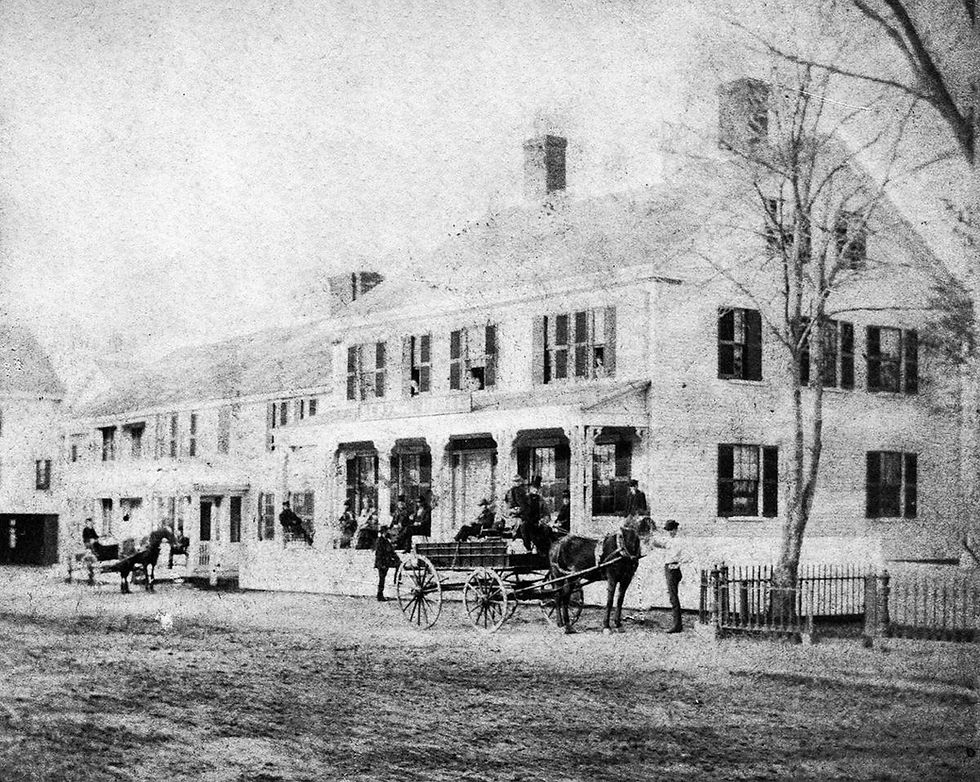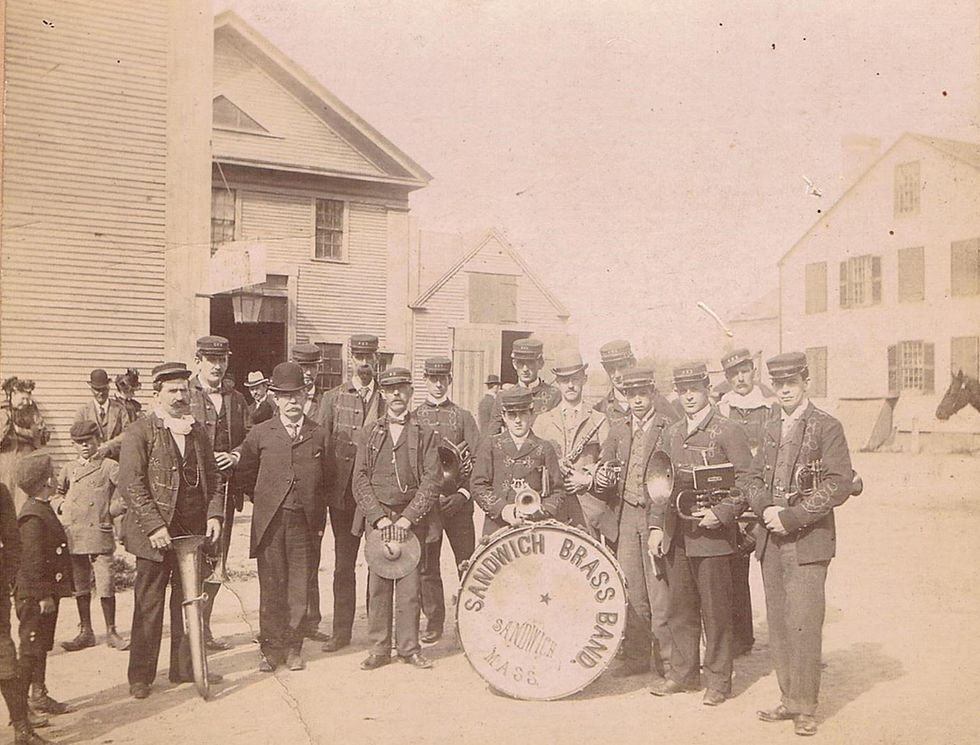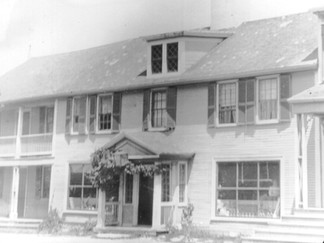Early Postal Service: Fessenden Tavern (Pt 5)
- Kaethe Maguire
- Nov 19, 2020
- 3 min read
Updated: Aug 19
The Fessenden Tavern on Main Street played an important role as a post office, and I've discovered some interesting tidbits about the the tavern, and taverns of yesteryear, that I think you will enjoy.
As you know if you read Part 2, taverns were a typical postal stop for the riders and the stagecoaches carrying mail, so they quickly became the local post offices as well.

The three photos above depict the Fessenden House which still stands today to the right of the Dan'l Webster Inn on Main Street. The Fessenden House became a mail stage stop in the early 1800s.
There was a law on the books at that time that prohibited the serving of alcohol to local people because the town’s people did not want the locals tempted with drink! There was a big temperance movement in the 1800s. Only visitors and patrons of the stagecoaches could drink when they stopped at a tavern. The thought was that they would soon be on their way out of town.

Additionally, there was no chance of sneaking a drink in in a local tavern if you were a local. Tavern windows were left uncovered by law so people could look in and check on the action inside.
When Mr. Louis Govoni bought the Central House in 1915--the bones of the Fessenden Inn--he changed the name to the Daniel Webster Inn. But do you know why he named the inn for Daniel Webster?
Daniel Webster--a larger than life character--was an American statesman who represented New Hampshire and Massachusetts in the U.S. Congress and served as the U.S. Secretary of State under Presidents William Henry Harrison, John Tyler, and Millard Fillmore.

And Webster liked nothing better than traveling down to Sandwich for the fishing, the hunting, and the comfort of the tavern and inn right there on Main Street. After all, travel was still a hard ordeal and Sandwich was the first town on Cape Cod and now more easily accessible.
Once travel increased with improved roads after the American Revolution and then rail service reached Sandwich in 1848, people ventured down to the Cape. Of course it was only the wealthy who had the leisure time and money for travel. Our Main Street was the direct road to the Lower Cape since 6A (Old King’s Highway) did not exist in that part of town until 1930.
The impact of the railroad coming through Sandwich gave rise to a multitude of post offices. They tried to locate near the tracks, as the trains came from Boston and were heading further East down Cape.
By 1850, Sandwich boasted seven different post offices in Sandwich village, Pocasset, Monument, East Sandwich, North Sandwich, South Sandwich, and West Sandwich.
By 1879 Sandwich had 10 post offices, more than any other town in the state. Of course, what is now Bourne was still part of Sandwich until 1884.
You will recognize some old Sandwich names in this 1878 list of postmasters and postmistresses. At that time there was one post office for every 400 residents! After all, people did not have cars in those days and getting around required a horse or a horse and buggy.
Sandwich - Frederick S. Pope
Spring Hill - Rebecca D. Ewer *
Farmersville - William H. Meiggs
Pocasset - Asa Raymond
Monument Beach - P.H. Phinney
Cohasset Narrows (Plymouth) - Isaac Small
Monument - A.F. Swift
North Sandwich - W.A. Nye
West Sandwich - Isaac N. Keith [1]
* Ms. Rebecca Ewer was at first the assistant to Mr. Frederick. B. Holway, who died in 1883 and thus. Mrs. Ewer was made post mistress June 1980.s. [8]

[1] The Chatham Monitor, 18 July 1878.
[8] The Sandwich Independent, 9 January 1900 as cited by Russell A. Lovell Jr.
[9] Russell A Lovell Jr. Sandwich, A Cape Cod Town. pp. 232-243.
Note: The post office series was written for Facebook in lieu of The Sandwich Enterprise.
Kaethe Maguire is a member of the Friends of the Sandwich Town Archives, a dedicated, all-volunteer, 501(c)(3) nonprofit committed to supporting and promoting the archives’ collections and the rich, diverse history of the town of Sandwich.











Comments